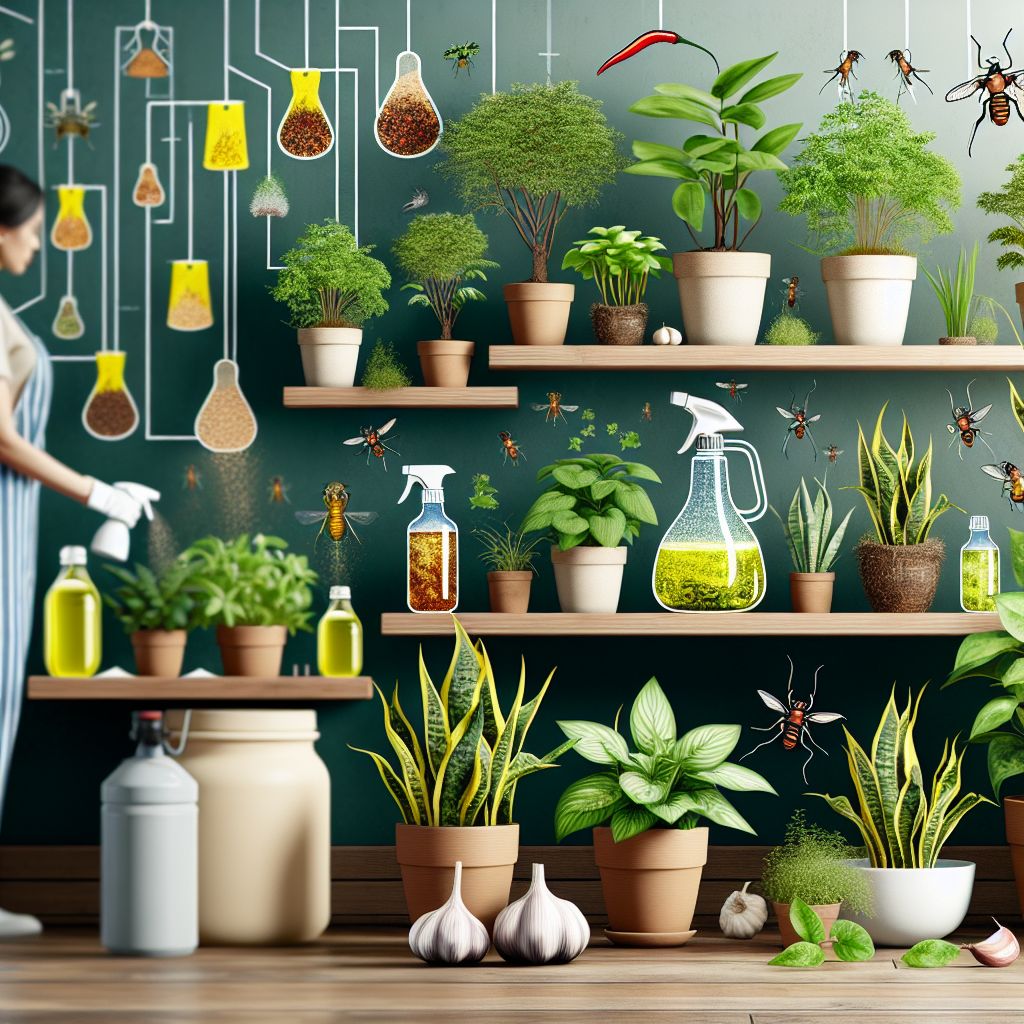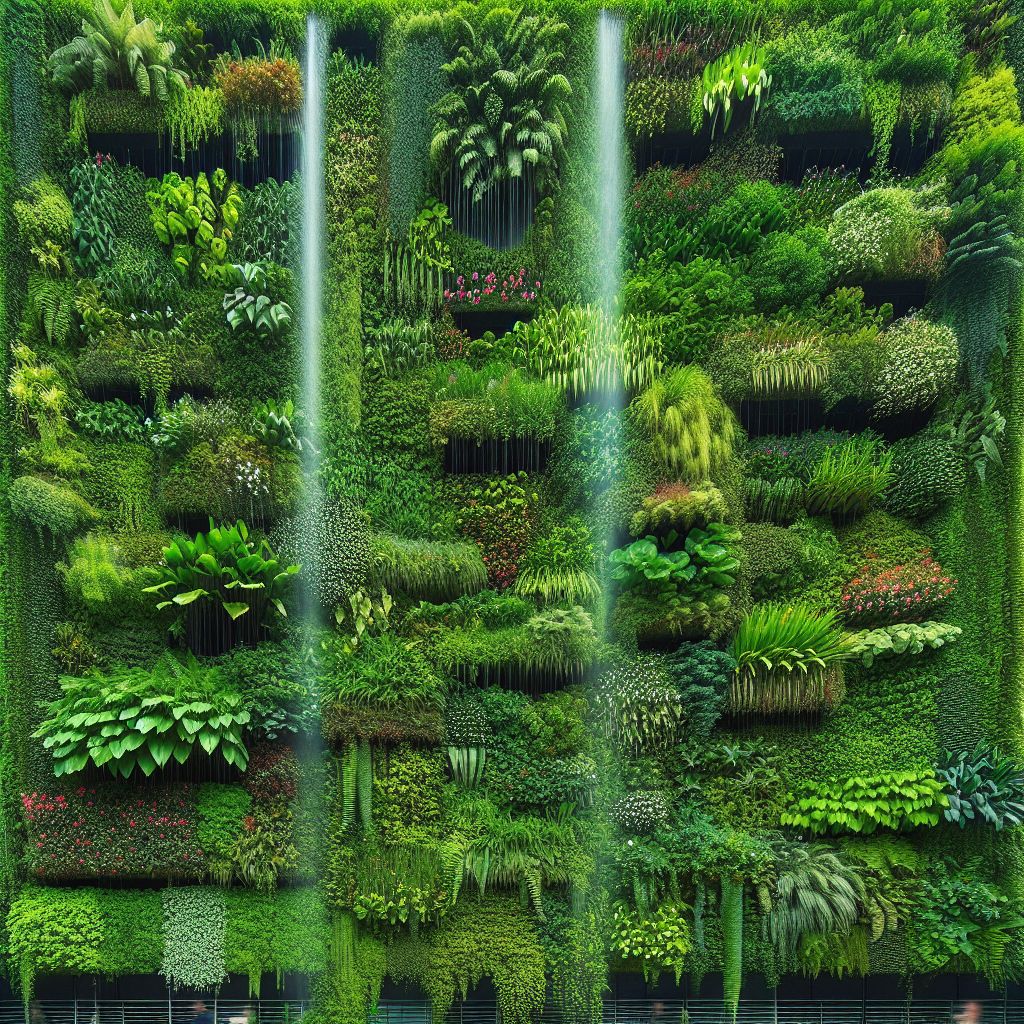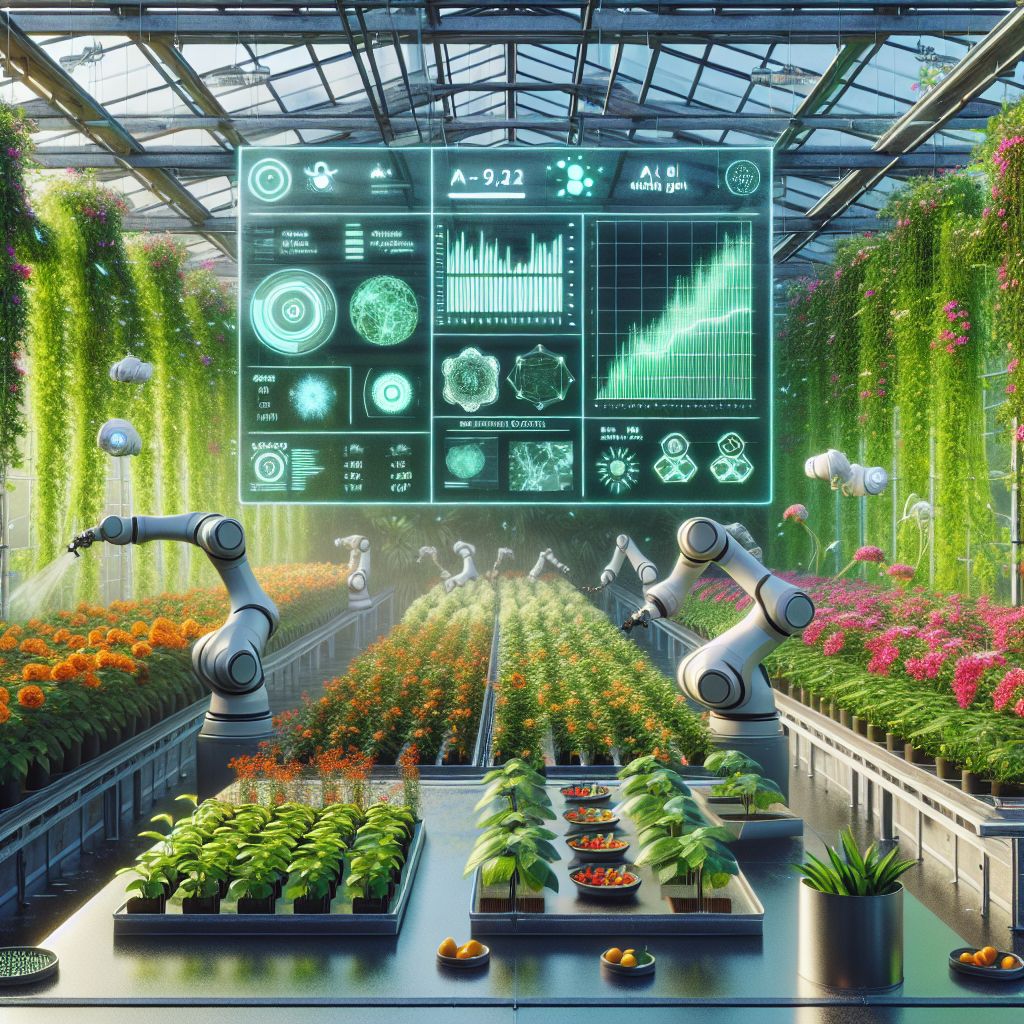Key Takeaways
-
Innovative technologies like AI and robotics are revolutionizing greenhouse management.
-
Adopting sustainable practices such as water conservation and organic pest control can enhance your greenhouse’s eco-friendliness.
-
Advanced climate control systems ensure optimal growing conditions for your plants.
-
Customized LED grow lights can improve plant growth and reduce energy costs.
-
Smart sensors and data analytics provide real-time insights to optimize greenhouse operations.
2024 Greenhouse Gardening Trends & Tips To Watch
Innovative Technologies in Greenhouse Gardening
Greenhouse gardening is evolving rapidly with the introduction of cutting-edge technologies. These innovations not only make gardening more efficient but also significantly enhance the quality and yield of crops. Let’s dive into some of the most exciting trends for 2024.
Sustainable Practices and Eco-Friendly Techniques
As we become more aware of our environmental impact, sustainable gardening practices are gaining traction. Implementing eco-friendly techniques in your greenhouse can help conserve resources and promote a healthier ecosystem. Here are some practices to consider:
-
Water Conservation: Utilize drip irrigation systems to minimize water waste.
-
Organic Pest Control: Use natural predators and organic pesticides to manage pests.
-
Composting: Create compost from organic waste to enrich your soil.
Climate Control and Automation
Maintaining the ideal environment in your greenhouse is crucial for plant growth. Advanced climate control systems can help you achieve this effortlessly. Automation tools can manage temperature, humidity, and ventilation, ensuring optimal conditions around the clock.
Customized Plant Lighting Solutions
Light is a vital factor in plant growth. In 2024, customized LED grow lights are becoming more popular. These lights allow you to adjust the color spectrum to suit different plants’ needs, promoting healthier and more robust growth. They are also energy-efficient, reducing your greenhouse’s overall energy consumption.
What’s New in Greenhouse Technology?
AI and Robotics in Greenhouse Management
Artificial Intelligence (AI) and robotics are transforming the way we manage greenhouses. AI can analyze vast amounts of data to provide insights into plant health, growth patterns, and environmental conditions. Robotics can perform tasks such as planting, watering, and harvesting, reducing the need for manual labor.

“Autonomous Robot Does the Greenhouse …” from www.greenhousegrower.com
Smart Sensors and Data Analytics
Smart sensors are becoming indispensable tools in greenhouse gardening. These devices can monitor various parameters such as soil moisture, temperature, and light levels. By collecting and analyzing this data, you can make informed decisions to optimize your greenhouse operations. For more insights on upcoming trends, check out these greenhouse tech trends to look forward to in 2024.
Energy-Efficient Heating and Cooling Systems
Energy efficiency is a key consideration for modern greenhouses. New heating and cooling systems are designed to minimize energy consumption while maintaining optimal growing conditions. These systems can include heat pumps, solar panels, and geothermal energy solutions.
Sustainable Greenhouse Gardening Practices
Water Conservation Techniques
Water is a precious resource, and conserving it is essential for sustainable gardening. Drip irrigation systems are highly effective in delivering water directly to the plant roots, reducing evaporation and runoff. Additionally, collecting rainwater can provide a free and sustainable water source for your greenhouse.
Organic and Natural Pest Control
Using organic and natural methods to control pests is not only better for the environment but also safer for your plants. Introducing beneficial insects like ladybugs and predatory mites can help keep pest populations in check. Organic pesticides made from neem oil or insecticidal soap can also be effective.

Color Spectrum Adjustments for Different Plants
Different plants have varying light requirements, and adjusting the color spectrum can optimize their growth. For instance, blue light promotes vegetative growth, while red light encourages flowering and fruiting. By using LED grow lights, you can tailor the light spectrum to meet the specific needs of your plants. This customization not only enhances growth but also improves the overall health of your greenhouse crops.
Cost-Effective Lighting Solutions
While LED grow lights offer many benefits, they can be expensive. However, the long-term savings on energy costs make them a cost-effective solution. Additionally, LED lights have a longer lifespan compared to traditional lighting options, reducing the need for frequent replacements. To further cut costs, consider using timers and dimmers to control light usage and optimize energy efficiency.
Climate Control: Maintaining the Ideal Environment
Creating the perfect environment for your plants is crucial for their growth and productivity. Climate control systems play a vital role in maintaining optimal conditions in your greenhouse. These systems regulate temperature, humidity, and ventilation, ensuring that your plants thrive regardless of external weather conditions. For more information on the latest advancements, check out these smart greenhouse systems.
One of the most significant advancements in climate control is the integration of smart technology. Automated systems can monitor environmental conditions in real-time and make adjustments as needed. This not only saves time but also ensures that your plants receive consistent care. For more information, check out our guide on smart greenhouse systems.
Temperature and Humidity Management
Maintaining the right temperature and humidity levels is essential for plant health. Too much heat can stress plants, while too little can slow growth. Similarly, high humidity can lead to mold and mildew, while low humidity can cause dehydration. Automated climate control systems can monitor these parameters and make adjustments to keep them within the ideal range.
Ventilation Systems for Air Quality
Good air circulation is vital for preventing disease and promoting healthy growth. Ventilation systems help to regulate air quality by removing excess heat and humidity and introducing fresh air. Modern greenhouses often use automated ventilation systems that can be programmed to operate based on temperature and humidity levels, ensuring optimal air quality at all times. Learn more about modern greenhouse designs and technology innovations to enhance your greenhouse setup.
Besides that, proper ventilation helps to reduce the risk of fungal infections and other diseases that thrive in stagnant air. Therefore, investing in a reliable ventilation system is crucial for maintaining a healthy greenhouse environment.
Automated Climate Control Solutions
Automated climate control systems offer numerous benefits for greenhouse gardening. These systems use sensors to monitor environmental conditions and make real-time adjustments to maintain optimal growing conditions. For example, if the temperature rises above a certain threshold, the system can activate cooling fans or open vents to bring it down.
Additionally, automated systems can be integrated with other smart tools such as irrigation systems and lighting controls. This integration allows for seamless operation and ensures that all aspects of your greenhouse environment are optimized for plant growth.
By implementing automated climate control solutions, you can reduce the need for manual intervention and ensure that your plants receive consistent care. This not only improves plant health but also increases productivity and yields.
-
Monitor environmental conditions with smart sensors.
-
Automate temperature, humidity, and ventilation controls.
-
Integrate with other smart tools for seamless operation.
Maximizing Space in Your Greenhouse
Efficient use of space is crucial for maximizing productivity in your greenhouse. By employing innovative techniques and smart design principles, you can make the most of the available space and grow a diverse range of plants.
One effective way to maximize space is through vertical gardening. This technique involves growing plants in stacked layers, allowing you to increase the number of plants without expanding the footprint of your greenhouse.

Vertical Gardening Techniques
Vertical gardening is an excellent solution for small greenhouses or those looking to maximize their growing area. By using shelves, trellises, and hanging pots, you can create multiple levels of growing space. This not only increases the number of plants you can grow but also improves air circulation and light penetration. For more ideas, check out these greenhouse gardening tips.
For example, you can grow vining plants like tomatoes and cucumbers on trellises, while using shelves for smaller plants like herbs and lettuce. This approach allows you to make the most of your greenhouse space and grow a diverse range of crops.
Efficient Layout Designs
Designing an efficient layout is key to maximizing space in your greenhouse. Start by planning the placement of your plants based on their light and water requirements. Group plants with similar needs together to simplify care and maintenance.
Consider using raised beds or containers to create defined growing areas. This not only helps to organize your greenhouse but also improves soil drainage and reduces the risk of soil-borne diseases. Additionally, using movable benches or tables can provide flexibility and allow you to reconfigure your layout as needed.
Container and Raised Bed Gardening
Container and raised bed gardening are popular methods for maximizing space and improving plant health. Containers allow you to grow plants in a controlled environment, making it easier to manage soil quality and moisture levels. They are also portable, allowing you to move plants as needed to optimize light and space. For more insights on gardening trends, check out these garden trends in 2024.
Raised beds offer similar benefits and can be customized to fit the dimensions of your greenhouse. They provide better drainage and can be filled with high-quality soil, promoting healthier plant growth. Additionally, raised beds reduce the need for bending and kneeling, making gardening more accessible and comfortable.
Implementing Automation and Smart Tools
Automation and smart tools are revolutionizing greenhouse gardening. These technologies simplify routine tasks, improve efficiency, and provide valuable insights into plant health and environmental conditions. By integrating these tools into your greenhouse, you can streamline operations and enhance productivity. For more on this, check out our guide on smart greenhouse systems.
Automated Watering Systems
Automated watering systems are a game-changer for greenhouse gardening. These systems use sensors to monitor soil moisture levels and deliver water precisely when needed. This ensures that plants receive the right amount of water, reducing waste and preventing overwatering.
There are various types of automated watering systems available, including drip irrigation, soaker hoses, and misting systems. Choose the one that best suits your plants’ needs and the layout of your greenhouse. Automated watering systems not only save time but also promote healthier plant growth by providing consistent moisture.
Remote Monitoring and Control
Remote monitoring and control tools allow you to manage your greenhouse from anywhere. These systems use sensors and cameras to provide real-time data on environmental conditions and plant health. You can access this information through a smartphone app or computer, making it easy to monitor and adjust settings remotely. For more on integrating technology, check out smart greenhouse systems.
For example, if the temperature in your greenhouse rises unexpectedly, you can activate cooling systems from your phone. This level of control ensures that your plants receive consistent care, even when you’re not physically present. Learn more about greenhouse tech trends to stay ahead in 2024.
Integrating Smart Apps and Devices
Smart apps and devices are becoming increasingly popular in greenhouse gardening. These tools provide valuable insights and automate routine tasks, making it easier to manage your greenhouse. For instance, smart thermostats can regulate temperature, while smart lights can adjust the light spectrum based on the time of day.
Integrating these tools into your greenhouse can significantly improve efficiency and productivity. Many smart devices can be connected to a central hub, allowing you to control all aspects of your greenhouse environment from a single app. This integration ensures seamless operation and helps you stay on top of your gardening tasks. For more on this, check out greenhouse tech trends.
Remote Monitoring and Control
Remote monitoring and control tools allow you to manage your greenhouse from anywhere. These systems use sensors and cameras to provide real-time data on environmental conditions and plant health. You can access this information through a smartphone app or computer, making it easy to monitor and adjust settings remotely.
For example, if the temperature in your greenhouse rises unexpectedly, you can activate cooling systems from your phone. This level of control ensures that your plants receive consistent care, even when you’re not physically present.
Integrating Smart Apps and Devices
Smart apps and devices are becoming increasingly popular in greenhouse gardening. These tools provide valuable insights and automate routine tasks, making it easier to manage your greenhouse. For instance, smart thermostats can regulate temperature, while smart lights can adjust the light spectrum based on the time of day.
Integrating these tools into your greenhouse can significantly improve efficiency and productivity. Many smart devices can be connected to a central hub, allowing you to control all aspects of your greenhouse environment from a single app. This integration ensures seamless operation and helps you stay on top of your gardening tasks.
Guided Tips for Successful Greenhouse Gardening in 2024
Whether you’re a seasoned gardener or just starting, these tips will help you achieve success in your greenhouse gardening endeavors. By following these guidelines, you can create a thriving environment for your plants and enjoy bountiful harvests.
Choosing the Right Plants for Your Greenhouse
Selecting the right plants is crucial for a successful greenhouse garden. Consider factors such as light requirements, temperature preferences, and growth habits when choosing plants. Some popular greenhouse plants include tomatoes, cucumbers, peppers, and herbs like basil and parsley.
It’s also important to consider the size of your greenhouse and the available space. Opt for compact or dwarf varieties if you have limited space. Additionally, choose plants that can thrive in the specific conditions of your greenhouse, such as humidity levels and light intensity.
Proper Plant Care and Maintenance
Regular care and maintenance are essential for healthy plant growth. This includes watering, fertilizing, pruning, and monitoring for pests and diseases. Establish a routine to ensure your plants receive consistent care.
Watering is one of the most critical aspects of plant care. Use an automated watering system to ensure your plants receive the right amount of water. Additionally, fertilize your plants with organic or slow-release fertilizers to provide essential nutrients. Pruning helps to promote healthy growth and prevent overcrowding.
Preventing Common Greenhouse Issues
Greenhouses can be prone to certain issues such as pests, diseases, and environmental stress. Taking preventive measures can help you avoid these problems and keep your plants healthy.
-
Pest Management: Use organic pest control methods and introduce beneficial insects to keep pests in check.
-
Disease Prevention: Maintain proper hygiene, ensure good air circulation, and avoid overwatering to prevent fungal infections.
-
Environmental Stress: Monitor temperature and humidity levels, and use shading or ventilation to prevent heat stress.
Conclusion: Embrace the Future of Greenhouse Gardening
Greenhouse gardening is evolving rapidly, and staying informed about the latest trends and technologies is essential for success. By embracing innovative tools and sustainable practices, you can create a thriving and productive greenhouse garden in 2024.
Key Trends to Follow
Keep an eye on the following trends to stay ahead in greenhouse gardening:
-
Integration of AI and robotics for efficient greenhouse management.
-
Adoption of sustainable practices such as water conservation and organic pest control.
-
Use of advanced climate control systems to maintain optimal growing conditions.
-
Implementation of customized LED grow lights for improved plant growth.
-
Utilization of smart sensors and data analytics for real-time insights.

Final Recommendations
To make the most of your greenhouse gardening experience in 2024, consider the following recommendations:
-
Stay updated on the latest technologies and trends in greenhouse gardening.
-
Implement sustainable practices to conserve resources and promote a healthy ecosystem.
-
Invest in advanced climate control and automation tools to optimize growing conditions.
-
Choose the right plants for your greenhouse and provide proper care and maintenance.
-
Take preventive measures to avoid common greenhouse issues such as pests and diseases.
Frequently Asked Questions (FAQ)
How can I improve energy efficiency in my greenhouse?
Improving energy efficiency in your greenhouse can be achieved by using energy-efficient heating and cooling systems, such as heat pumps and solar panels. Additionally, using LED grow lights and automated climate control systems can help reduce energy consumption.
What are the best practices for pest management in a sustainable greenhouse?
Sustainable pest management practices include using organic pesticides, introducing beneficial insects, and maintaining proper hygiene. Additionally, ensuring good air circulation and avoiding overwatering can help prevent pest infestations.
How do smart sensors benefit greenhouse gardening?
Smart sensors provide real-time data on environmental conditions such as soil moisture, temperature, and light levels. This information allows you to make informed decisions and optimize your greenhouse operations, ensuring that your plants receive consistent care. For more insights, check out these smart greenhouse systems.
As we look forward to 2024, greenhouse gardening continues to evolve with exciting new trends and innovations. One of the key trends is the integration of smart technology to optimize plant growth and resource management. Additionally, sustainable practices such as water recycling and the use of biodegradable materials are gaining popularity. Gardeners are also experimenting with a wider variety of plants, including exotic species and heirloom varieties. For more insights on upcoming trends, check out this article on greenhouse tech trends to look forward to in 2024.
